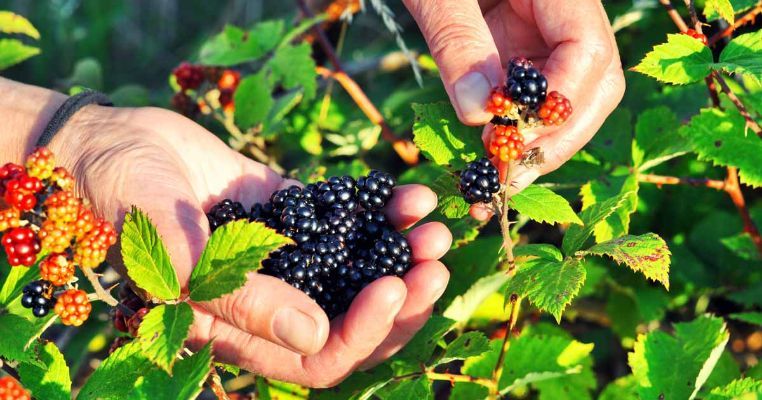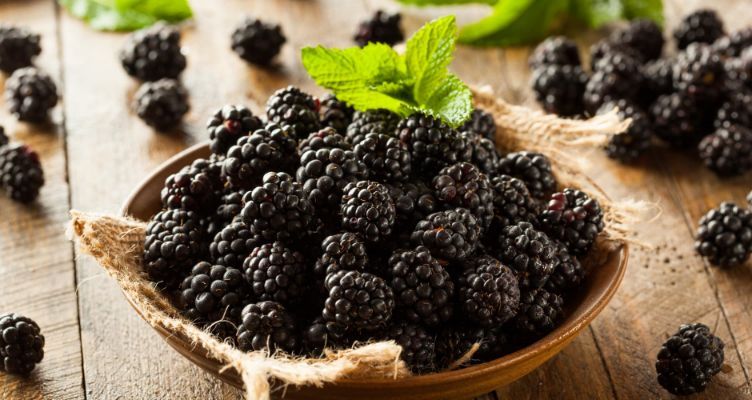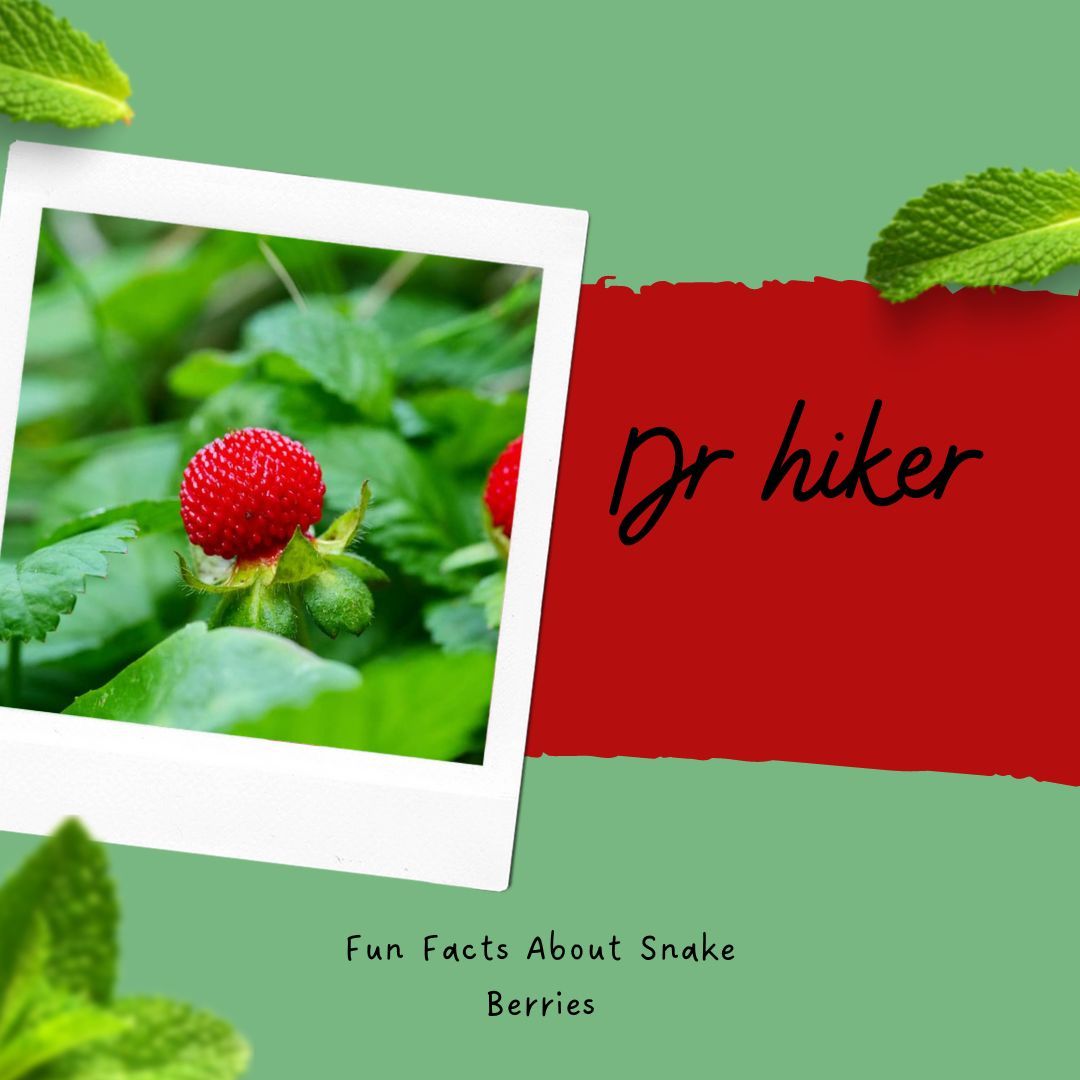Most wild berries are tart and can be eaten in a variety of ways to get rid of the toxicity of some compounds in them. However, eating too many berries can cause discomfort and poisoning, leading to vomiting and diarrhea, and sometimes can be fatal.
In this guide, we have elaborated on how to identify edible wild berries to keep yourself safe and healthy by avoiding berries that aren’t good for you.
Can You Eat Wild Berries?

Though most wild berries are edible, you must cook some before eating. Some wild berries have edible fruit, but other parts of plants, like leaves or seeds, are not edible. Consuming these inedible parts of the plant will cause vomiting, diarrhea, coma, and in the worst scenario, even death.
Exploring a bit before foraging for wild berries is highly advisable to avoid any unwanted circumstances. You must examine multiple things to keep yourself safe from eating harmful berries.
Even if you eat an edible wild berry, ensure you don’t eat more than one or two. Before eating, always wash berries with filtered water. Wait for one or two hours to digest the berries; till then, do not eat more.
How Do You Test Wild Berries?
You might have encountered or tasted different berries at your local grocery store. Some of these berries are strawberries, blackberries, blueberries, and raspberries. Though these all seem quite similar, you can differentiate them by considering the size.
Some other berries, such as loganberries, dewberries, and olallieberries, are also edible but only safe to eat if you do not have allergies. Here are a few methods you can rely on to identify edible wild berries:
Identify By Texture & Packing
If you find tightly packed clustered wild berries, there is a 99% surety you can eat them without worrying. Mulberries, thimbleberries, and raspberries are mostly found in clusters.
The texture of these berries feels bumpy and consists of many particles. Firm, juicy, and soft berries are also edible.
Notice Berry Color
You can easily identify the edible wild berries by their color. By seeing its color, you can also find out if the berry is ripened or raw. It is edible if the berry has purple, black, or blue colors. However, be careful with nightshade berry, which is similar to a blueberry but highly toxic.
Beware of Deceptive Colors
Usually, orange and red berries are edible, but there is a 50/50 probability as these berries are usually more toxic than dark-skinned berries.
Before eating such berries, you must perform an edibility test. You must also avoid berries with green, yellow, or white colors, as these are some of the most poisonous and toxic berries.
Seed Color, Shape, Size & Number
Check the number of seeds, their color if it is black or pale tan, their shape is round, and their size if it is small or large.
What Type Of Wild Berries Are Safe To Eat?
With some knowledge of foraging edible wild berries, you can enjoy safe berries with different tastes. You can notice the described signs to tell if the wild berry is edible.

For your ease, we have enlisted some of the most commonly found wild berries you can eat safely:
- Wild Strawberries
Also known as Juneberry or Saskatoon berry fruit, they grow on small trees or shrubs. You can identify them by their gray bark and green leaves. The plant blooms in early spring.
- Blackberries
Grown in clusters, these dark purple or almost black berries are edible. These berries seem like dewberries in looks and taste,
- Blueberries
If you are hiking in the rocky hills or fields of North America, you will find plenty of blueberries hanging on woody stems. Blueberries are edible and have varying tastes, from sweet or tart.
- Cranberries
These highly nutritious berries have several health benefits, and you can find them in abundance in North America. Cranberries are grown on dwarf shrubs or vines beside trails.
- Huckleberries
Native to North America, Huckleberry has a taste similar to blueberry and is high in oxidants offering multiple health benefits such as improved blood sugar levels and reduced cholesterol and tumor formation.
- Raspberries
You will find raspberries in red clusters on bushes with thorns and white flowers. You can easily identify these berries due to their bumpy skin and hollow insides.
How Can You Tell If A Wild Berry Is Poisonous?
Though you can find a wide range of edible wild berries when hiking, you will also encounter many poisonous berries that can cause much trouble. Eating poisonous berries should never be ingested due to their adverse health effects. Here is the list of some berries you should avoid eating at any cost:
- Holly Berries
Red clusters that run smoothly along the stems can easily identify these berries. The color can vary from red to black, green, or yellow. However, they contain high amounts of toxins, such as saponin, which leads to nausea, vomiting, and stomach pain.
- Mistletoe
Mistletoe is an evergreen plant on which white berries grow in abundance. They can also be pink or red and are found in clumps. There is high content of phoratoxin in mistletoe berries that can cause stomach cramps and toxicity inside the adrenal gland, kidney, and brain.
- Bittersweet
Also known as woody nightshade, these berries and their leaves are poisonous. The bright red berries contain solanine toxin that leads to gastrointestinal infections, irregular heartbeat, and stomach cramps.
- Ivy Berries
These berries are slightly toxic to humans but highly toxic to cars, dogs, and horses. Ivy berries turn from pale green to whitish color when getting poisonous. They also include saponin, which can cause nausea, vomiting, and stomach issues.
- Yew Berries
You might get attracted to these bright red berries that are highly toxic and can be fatal even if eaten in small amounts. The toxic compound in these berries is taxine, leading to difficulty breathing, irregular heart rate, dizziness, seizures, and even death.
- Virginia Creeper Berries
These purple-black wild berries grow on vines with five leave aggregated and joined by stems containing flowers and fruit. There is high content of calcium oxalate in these berries that can severely damage kidneys.
What Color Berries Should You Not Eat In The Wild?

Approximately 90% of white or yellow berries are poisonous, while reddish-colored berries are also poisonous. Dark blue and blackberries can also cause toxicity to some extent. Though different berries can be poisonous, not all are fatal.

If you want to protect yourself from toxicity caused by berries, it is best to avoid eating them if you are unsure of their type. If a berry is new to you, do not eat it, or at least consider the similarities between edible and inedible berries.
FAQs
Which Berry Should Not Be Eaten In The Wild?
Holly berry, Ivy berry, and nightshade are some of the most poisonous berries in the wild. The high amounts of theobromine in Holly berries can cause toxicity even if consumed in small quantities. The most common signs of poisoning are nausea, vomiting, and a disturbed stomach.
What Is The Healthiest Wild Berry?
Though many berries have highly nutritional profiles, black raspberries are the healthiest. It has high contents of antioxidants, including fibers and natural sugar. Most wild berries also contain vitamin C and other vital nutrients beneficial for hair, brain, and heart.
Wrapping Up
Most wild berries are delicious and completely safe to eat. Many are packed with nutrients and contain potent antioxidants to provide several health benefits, such as protecting the brain and heart, increasing immunity, and repairing cell damage.
However, many wild berries are poisonous and can sometimes be fatal if consumed in larger quantities. If you want to stay healthy on trails, avoid eating any berry you are unsure about.









